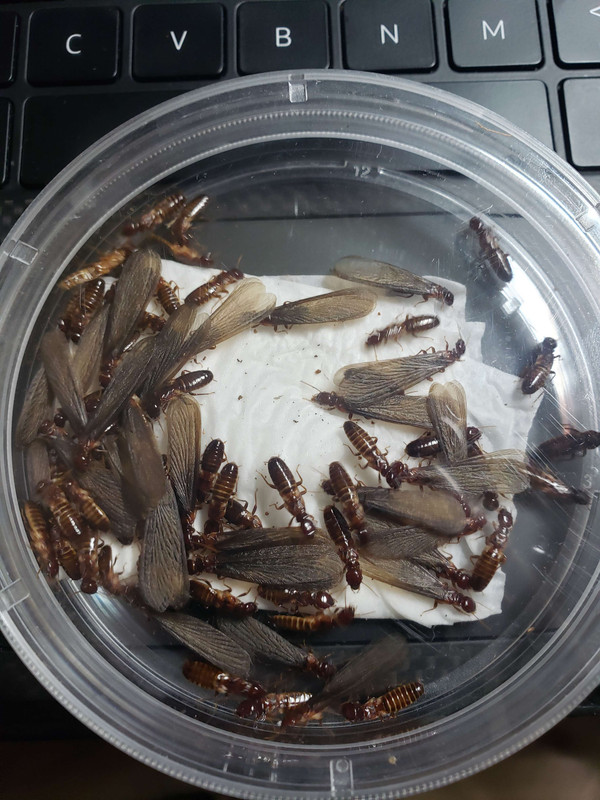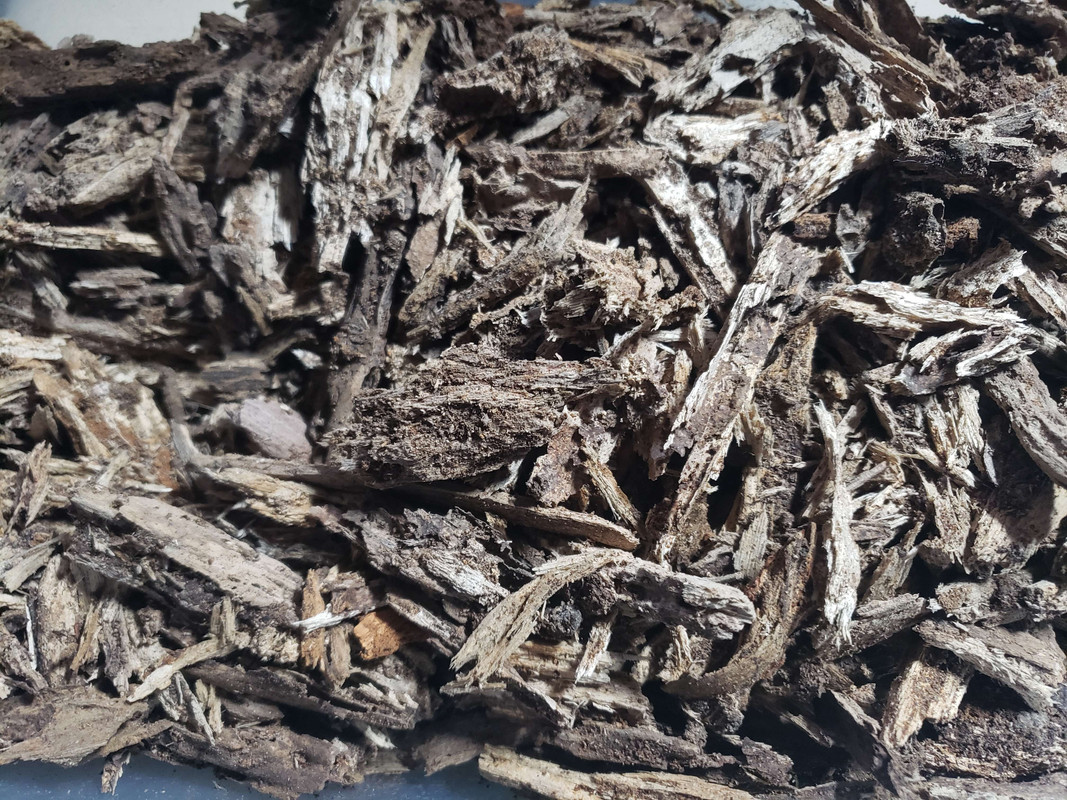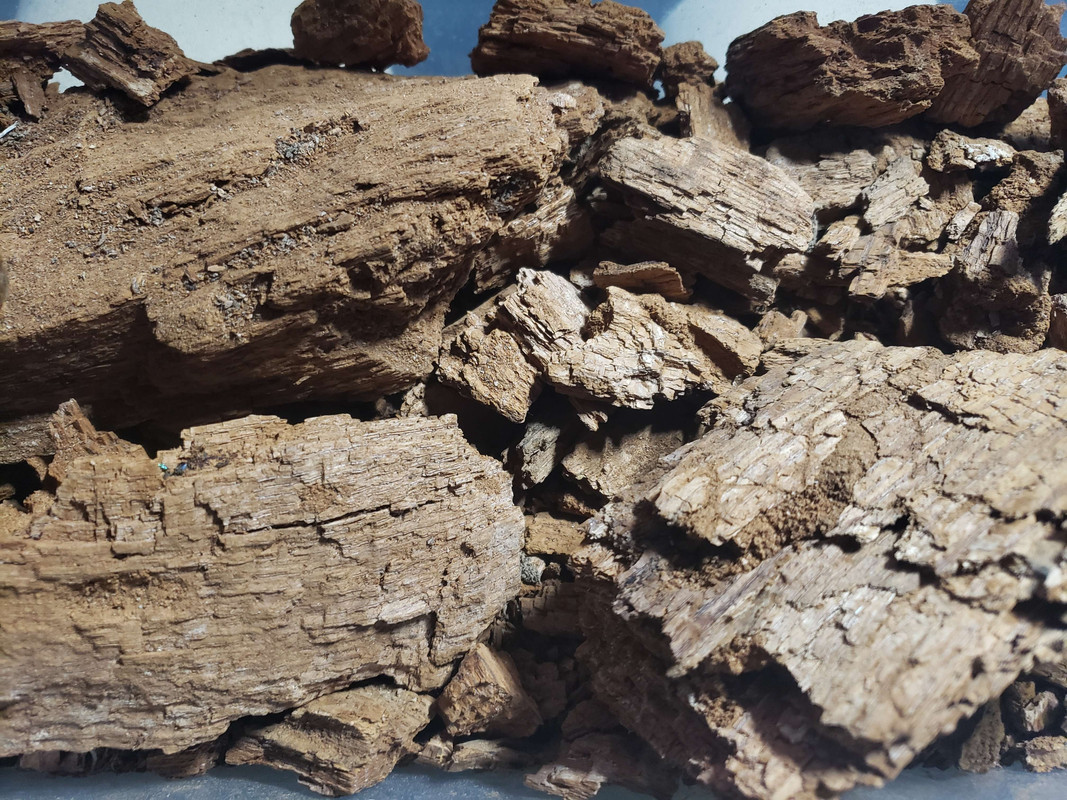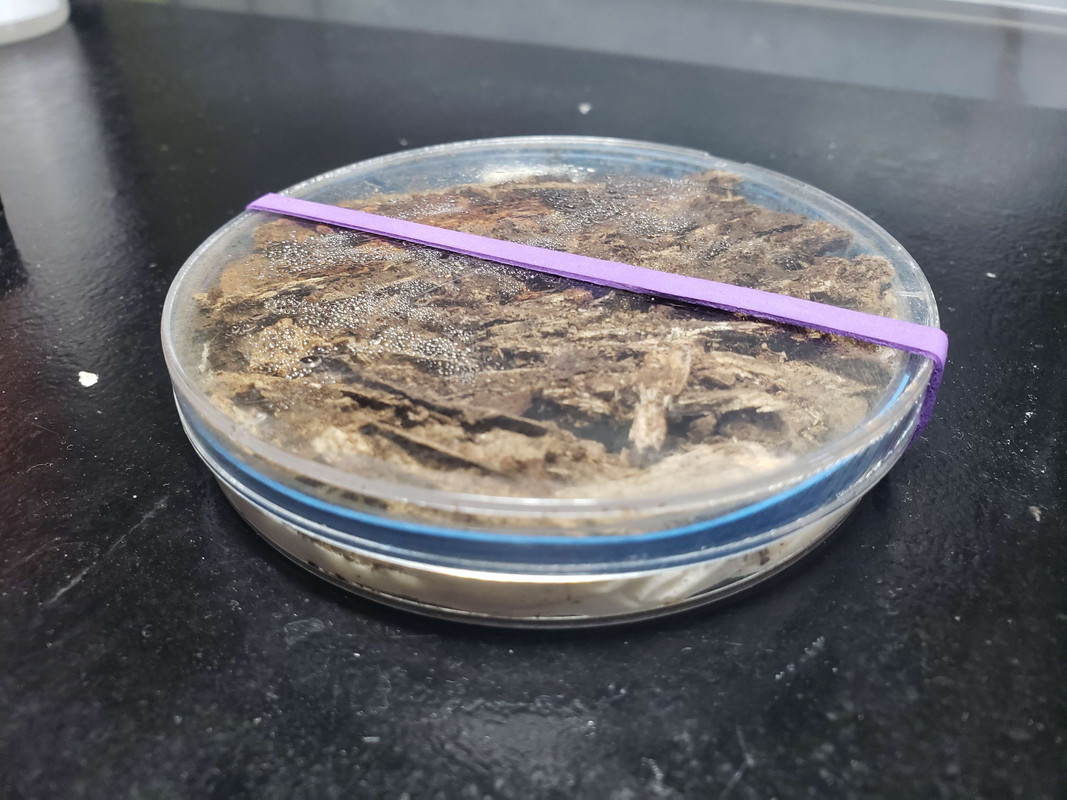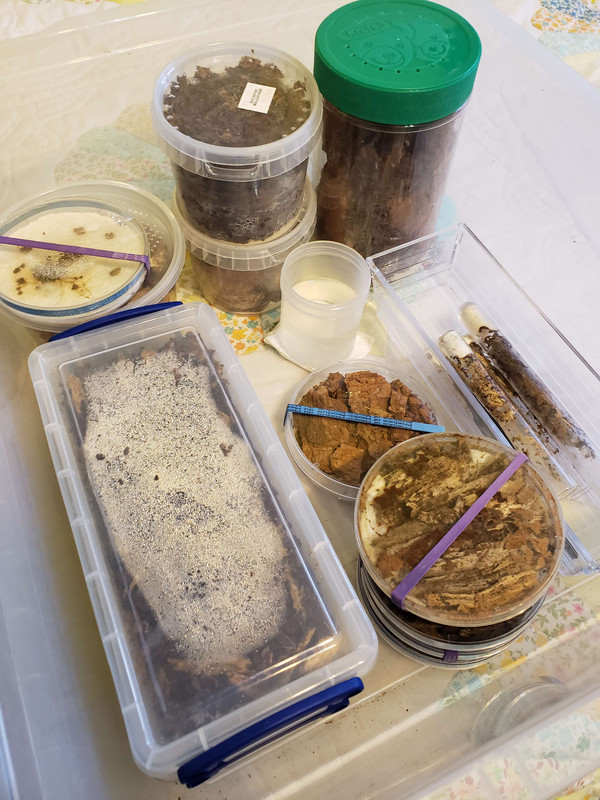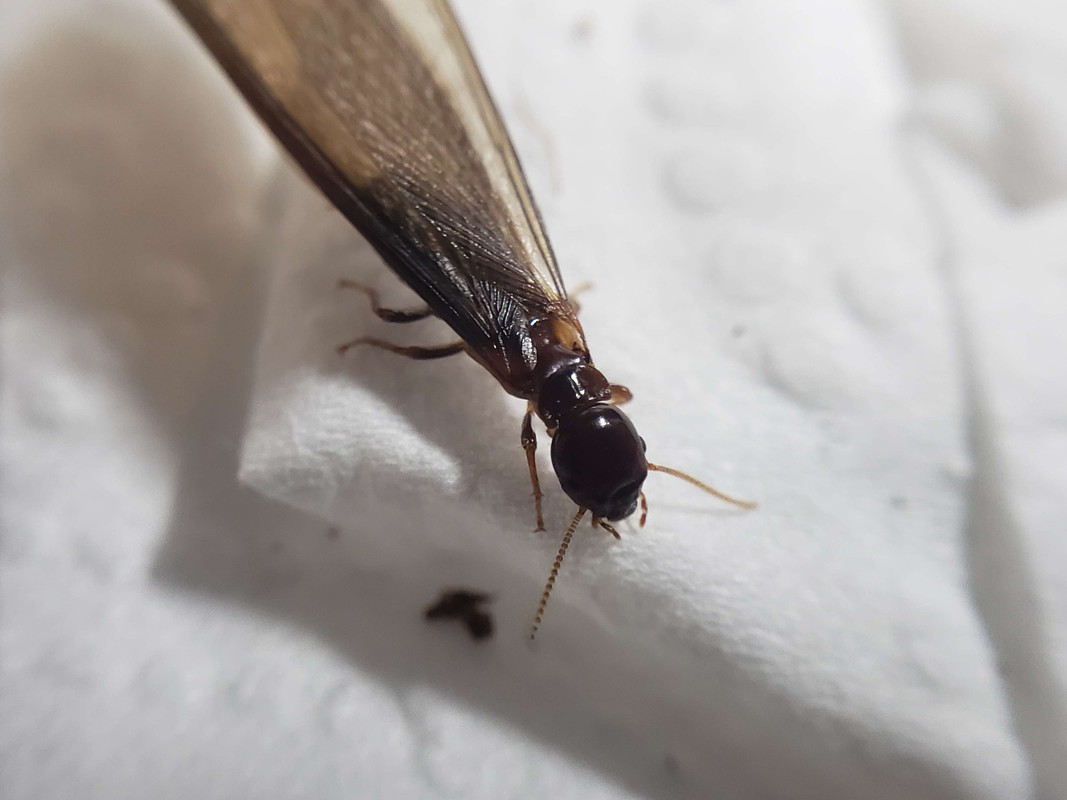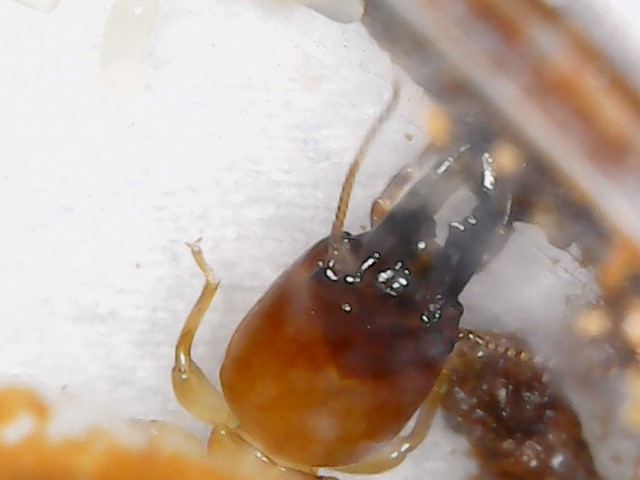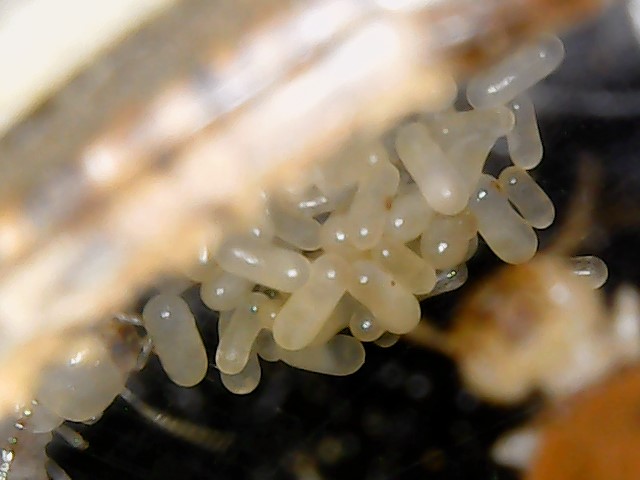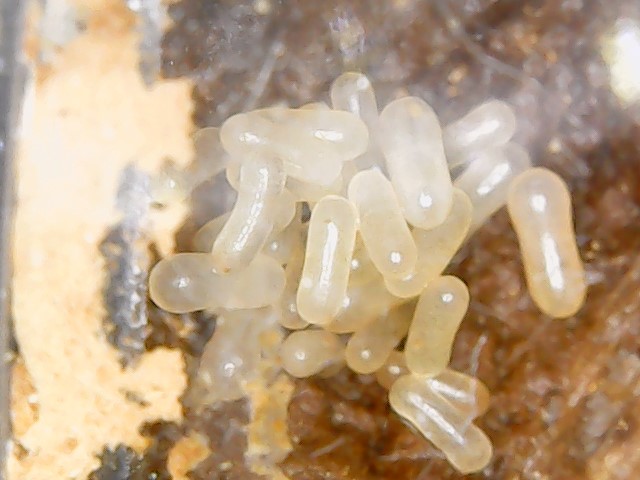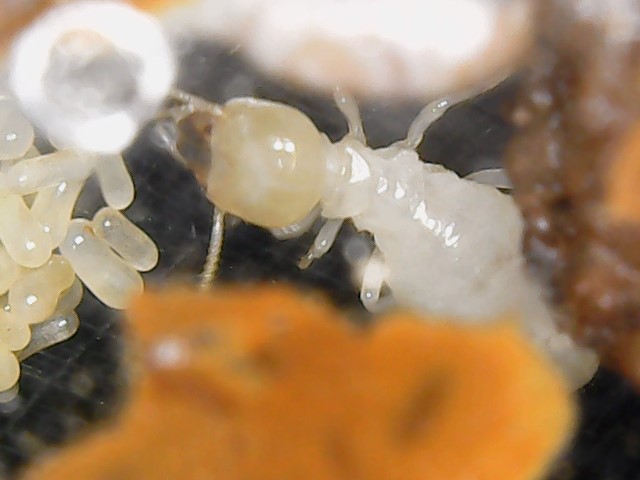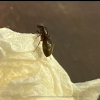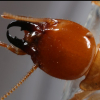Hi folks,
Just wanted to record some of my anecdotal findings from raising some termites over the last year. As a disclaimer I'm not a scientist (and almost failed my biology course!) so take this all with a good pinch of salt. I think it's worth experimenting with different founding styles for any termites you get and seeing what works well for you.
I received several Zootermopsis nevadensis pairs last year and founded them in various setups with different container shapes and wood types. I found that the colonies founded in petri dishes founded more quickly and more successfully than those founded in test tubes. I also found that colonies raised on a mix of wood types and wood-materials performed better than those raised solely on white-rotted wood.
Background
Termites
I received 60-70 Zootermopsis angusticollis imagoes from a contact on Vancouver Island last October. The imagoes were caught while they were swarming, so they likely all came from the same colony and many came with their wings still attached.
Wood Types
I used two different types of wood for raising these termites:
- White-rotted wood: this was a soft, pale-brown/white wood which I initially collected a Reticulitermes flavipes colony in, but kept the wood after moving them out of it. It seems to be home to a good variety of springtails, isopods, and myriapods. The wood was stringy/fibrous and soft, but not crumbly. Apparently this kind of wood retains a good mix of macro and micro nutrients (cellulose, lignin, nitrogen, minerals, etc...).
- Brown-rotted wood: this wood was hard, crumbly, and completely dried out. I had it in my closet for close to a year but completely forgot about it. When I initially collected it it was much heavier but I suspect much of the weight was water. This type of wood is lacking in cellulose.
You can learn more about the types of wood rot here: Wood Decay in Trees | Forest Pathology.
Special Substrate
I also made a termite-specific substrate last summer (loosely based on this: Development of a standard medium for culturing the termite Reticulitermes speratus | Insectes Sociaux (springer.com)). Broadly, the steps I took to make this medium were:
1. Crumble up some cubic brown-rotted wood and rise it as best as possible.
2. Add the wood to a container, fill the container with water until the wood is covered, and add baking yeast.
3. Let the mixture ferment for a few months, then drain the water and serve.
I believe the idea with this formula is to concentrate beneficial nutrients in the fermented wood (especially nitrogen which I've been told is difficult for termites to acquire in nature).
Founding Setups
I founded the pairs in 3 types of setups:
- 10x normal test tubes: these were glass/plastic 13mm diameter test tubes. I put a wad of wet tissue paper at the back of the tube, then filled the rest of the tube with white-rotted wood, before adding one pair to each tube and plugging the tube with cotton.
- 3x large test tubes: these were glass 20mm diameter test tubes. I filled the bottom third of each tube with the special substrate, then filled the remaining two thirds with white-rotted wood. I added 2 pairs to each tube (4 termites total) and plugged the end with cotton.
- 6(?)x petri dishes: these were 10mm deep 60(?)mm diameter plastic petri dishes. I put a layer of tissue paper on the bottom, then filled about a one third pizza slice area of each dish with the special substrate and the other two thirds with the white-rotted wood. I added 2-3 pairs per dish, then put an elastic band around the circumference of each dish before putting on the lid and wrapping another elastic band around the lid and the dish to secure the lid.
- 1x condiment container: this was a 30mm by 30mm cylindrical container that I assembled similar to the petri dishes (tissue paper then special substrate then white-rotted wood). I put any remaining imagoes in here.
All of these setups were put in a 300x200x200mm plastic container with a lid, into which I also placed an open-topped cup of water to maintain a high ambient humidity in the container. This "moisture chamber" setup seems to keep the humidity in these setups high enough that I don't need to water any of the individual setups.
Larger Setups
Once the founding colonies outgrew their initial setups (~4 or 5 months) I moved them into larger setups, of which I made 2 main types:
- 4x large cylindrical containers: various larger cylindrical containers (peanut butter jars, condiment containers) on the order of 70-100x100mm. I put a layer of tissue paper on the bottom before adding some of the special substrate and several large chunks of the cubic brown-rotted wood. I filled in the rest of each with the white-rotted woods, before adding the termites (and the entire contents of their petri dishes) and putting the lid on.
- 2x pencil case containers: clear plastic pencil cases, approximately 70x150x40mm, into which I put a layer of tissue paper, then some of the special substrate, as well as large chunks of the cubic brown-rotted wood, filling in the remaining gaps with the white-rotted wood.
I also isolated a slime mold from one of the setups and cultured it in its own petri dish (you can see it in the top left).
I should note that I made some changes throughout the investigation:
- Once it became apparent that the colonies in test tubes weren't going to found, I moved them to petri dishes. A few of these colonies seem to have eggs now.
- I merged the colonies in the large test tubes into one larger petri dish with exclusively brown-rotted wood. They have a few workers now but I don't think they're growing as fast as the colonies in the original petri dishes.
Results
Founding Results
For the colonies raised in the mixed-wood petri dishes, I found that they produced workers within a month or two, and outgrew their petri dishes within 4 months. This means they ate most of the available wood and the remaining material was mostly fecal pellets. Of the 6 or so colonies I founded this way, all 6 performed well and created healthy colonies. I noted that some of the setups remained rather damp, especially the ones where I used a higher portion of the special substrate, as the substrate itself is still moist. I haven't had the opportunity to dry it out much yet.
For the colonies founded in the small test tubes, one of them made a single soldier, and the rest did nothing. I moved them into petri dishes prepared as above about a month ago, and a few of them have eggs now. To me this suggests that a 13mm diameter test tube cannot hold enough wood for the colony to feel comfortable to begin founding. These tubes also didn't have any of the special substrate - so it's possible that this impacted their success as well.
For the colonies founded in the large test tubes, none of these colonies produced any workers either. I found that the imagoes dug in the substrate at the back third of the tube but it didn't maintain its structure very well, and so I don't think they could use that part of the tube as a nest. On a side note, I had all three of these tubes beside each other in the container, and noted that the imagoes from one tube dug their way out of the cotton and into one of the neighbouring tubes. I guess they got bored on their own.
For the colony founded in the condiment container, they did fairly well though were more space constrained than the petri dishes. They produced a soldier and a few workers within a similar timespan.
Larger Setup Results
While this is technically ongoing, I can record some notes from what I've seen so far.
The colonies have successfully taken hold in at least 3 of the 4 cylindrical containers and both of the pencil case containers. In the past, my Zootermopsis would always die out once I moved them to a larger setup - it seems they've avoided that this time however. As for any differences between the two setups, I've found that the termites are harder to observe in the cylindrical containers - likely because there's less surface area for the same amount of volume, so they can more easily hide inside larger chunks of wood.
Many of the colonies have made tunnels into the tissue paper layer on the bottom of the containers, where I can see them foraging. It seems they like to eat the tissue paper - possibly because of the high cellulose content. Does this suggest the other woods I've provided are low in cellulose? I'm not sure.
Conclusion
Some key takeaways I've drawn from this investigation are:
- Petri dishes seem to be more suited to founding than small test tubes.
- Providing a variety of wood types might be important to colony success.
- The moisture chamber concept seems fairly effective at maintaining humidity.
- For large setups, expanding on the petri dish format seems fairly effective.
- The pencil-case form factor (short, wide, and long) seems fairly effective for observation.
And finally some areas for future investigation include:
- Can I replicate these findings with other termite species (Zootermopsis angusticollis, Reticulitermes flavipes)?
- Can I distinguish whether it was the wood type of the small test tubes or their form factor that led to colonies failing to found in them?
Anyway that's it for now. I may update this as the colonies grow to include more observations about late-game setups. Let me know if you have any questions or want more explanation about or images of certain setups. I'll include a few more pictures of the termites below for those interested.



